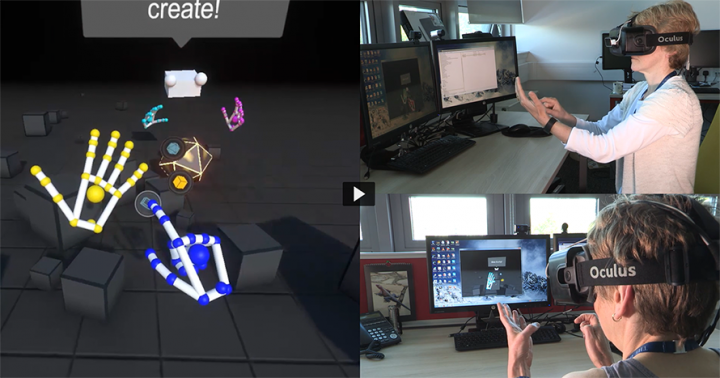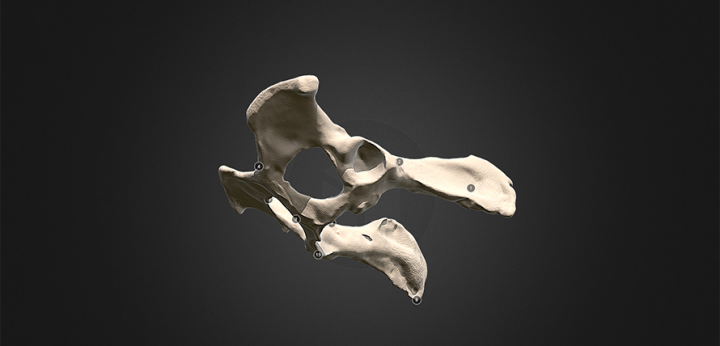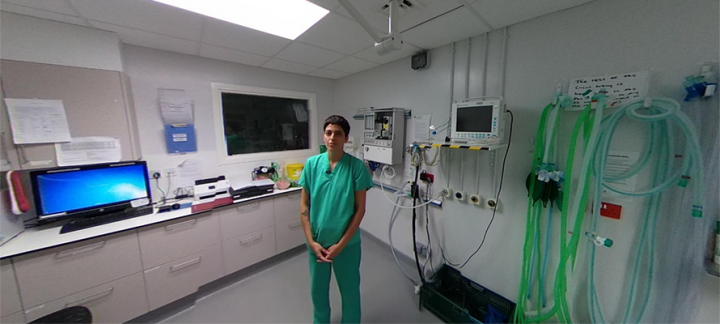Electric Sheep: the future of VR in veterinary education
Senior E-Learning Developer Brian Mather talks about digital education and the future of Virtual Reality in teaching
The Royal (Dick) School of Veterinary Studies’ Digital Education Unit (DEU) works with lecturers to provide students with immersive learning experiences.
“The term ‘Immersive Media’ includes Virtual Reality, Augmented Reality and 360* video – but each is very different,” explains Brian Mather, Senior E-learning Developer. “Virtual Reality (VR) places you inside a completely digital environment; augmented reality overlays digital content onto the real world, and 360* video plays out a recording that you observe and can manipulate but cannot move independently within.”
Immersive Media examples
-
360* video with augmented content: William Dick Building Tour
-
360* still image combined with 360* video: Anaesthesia tutorial

The School has been using 3D models in teaching since 2015, and it has been possible to view the content in VR since 2018, but in a limited sense. “The dream is to offer students a virtual practical experience, but the reality is still a way off” says Mather. “However, we use some fantastic technology in our teaching to enhance the student experience. For example, interactive digital content enables us to provide teaching and learning experiences remotely – or even enhance practical sessions.”
The emergence of 3D printing technology has presented new solutions for clinical treatments. “Imagine you have a shattered bone,” says Mather, “and you need to create a plate to pin it back together. Ordinarily, surgeons craft these while the patient is on the table, with only limited X-Ray information to work from in advance. 3D modelling based on pre-operative imaging and in combination with 3D printing enables custom medical engineering before the patient goes into surgery.” The School’s partnership with the Edinburgh College of Art and the School of Medicine has enabled swift progress in exploration and application of techniques, but these can be very expensive and take a great deal of time and skill, so have not yet been rolled out more widely.
Explorations into 3D printing at the School formed the beginnings of what is now an extensive 3D modelling project. "Once you’ve done the preparatory work to create a 3D model, you can actually do quite a lot with it beyond print it. You can put it into a virtual space for students to explore, you can label it, you can create layers,” says Mather. “It’s better than a printed model. There's huge potential.”
The School has a bone library for students to borrow from, which is helpful for their anatomical studies. The collection is incredibly valuable, and difficult to replace. However, thanks to 3D modelling techniques, portions of the library have been digitised. The digital bone library can be accessed anytime, anywhere, and provides the added benefit of enabling students to zoom in or out, rotate the images, view overlays or cross-sections and even study at the dinner table without upsetting friends and family!
Digital Bone Library example
- Interactive digital model (developed from CT data) - https://sketchfab.com/3d-models/pelvis-ab1-bony-prominences-efb75683dd6c4cc89445c491a77c3a08

360* photography and video technology has enabled the recording of high-quality video tutorials for students to review at home or in practice. Students at the Dick Vet can use their phones to access hundreds of video tutorials via an online library or by using QR codes around the School. For example, a student in the Equine Practice can remind themselves of tutorials they previously received on a particular procedure by pointing their phone at a QR code in the relevant area.
This technology is also used to ease the transition from practicals in the Clinical Skills lab to practice in our clinics. Students can view videos of techniques they have learned being put into practice by the School’s clinical staff, which enables students to move more confidently into the next stage in their learning. This also eases anxiety, helps to consolidate learning and enables students to 'meet’ the team they will work with in the hospital environment before they progress.
There is considerable interest from staff, students and the wider University in developing the use of VR as a teaching aid. One of the key questions the team face is how the technology can be used to deliver the greatest benefit. “The tricky part is developing the teaching material. Without digital content there is nothing to experience in virtual space. Even from a purely technical standpoint, this is a lot of work - but we also want to create valuable teaching and learning resources. Pedagogical practice still applies with the development of interactive simulation. ‘What am I teaching? Why am I teaching in this way? How will the students learn? How will they benefit from this form of teaching?’”
There is a range of devices through which the user can experience immersive VR, from lenses that can be used with your smartphone, which students are able to borrow from the School, to specialist headsets which plug into a PC. The latter are more powerful, but tether you to one location. “VR is becoming far more affordable and accessible. We are also very close to a stage where technologies merge and gaps are filled. Phone/communication/entertainment/teaching devices all fit nicely into your pocket, and if that device became your virtual reality headset too, that’s when things start to get really interesting.”

Future development of VR to enhance clinical education depends in part on the technology. “The exciting part is when you can manipulate and interact with the environment. There are several different devices for doing this, but they are all essentially a variation of a joystick. The first thing people tend to do when they put on a headset is look down at their hands.” The development of hand (and more importantly finger) tracking will make the experience more valuable. After that, the sense of touch needs to be replicated. Haptic feedback is in development, but will be some time before it is commercially available. “Surgical training is all about repetition and feel. When you can put your headset on, repeat your surgery as often as you like (no cadaver required) and receive tactile feedback from your haptic gloves, we’re there.”
Interactive digital model examples
-
Interactive digital model (developed using photogrammetry – photographs combined to create a 3D representation) to help students prepare for a practical dissection session - https://sketchfab.com/3d-models/ox-forelimb-1st-40k-189ee83d8f3d44b786049e888e1382fe
-
Interactive digital animation (created by hand) to form part of the teaching materials for a fully digital learning experience - https://sketchfab.com/3d-models/dart-preparation-d29bd4cebd544c0a807a0f44f5e9e467
About the Royal Dick School of Veterinary Studies
The Royal (Dick) School of Veterinary Studies is a one-of-a-kind centre of excellence in clinical activity, teaching and research. Our purpose-built campus, set against the backdrop of the beautiful Pentland Hills Regional Park, is home to more than eight hundred staff and almost fourteen hundred students, all of whom contribute to our exceptional community ethos.
The School comprises:
- The Roslin Institute
- The Global Academy of Agriculture and Food Security
- The Roslin Innovation Centre
- The Hospital for Small Animals
- Equine Veterinary Services
- Farm Animal Services
- Easter Bush Pathology
- The Jeanne Marchig International Centre for Animal Welfare Education
We represent the largest concentration of animal science related expertise in Europe, impacting local, regional, national and international communities in terms of economic growth, the provision of clinical services and the advancement of scientific knowledge.


